A famous chef went on a 6-month mission to create the perfect hamburger - here's what he came up with
This is Heston Blumenthal. He's a Michelin three-star chef who is known for his scientific approach to cooking and for pushing the envelope of molecular gastronomy.

Blumenthal says *this* is the ultimate hamburger. He and his culinary team spent six months traveling to famous burger restaurants, meeting with food scientists, and experimenting in their lab before revealing the perfect specimen.
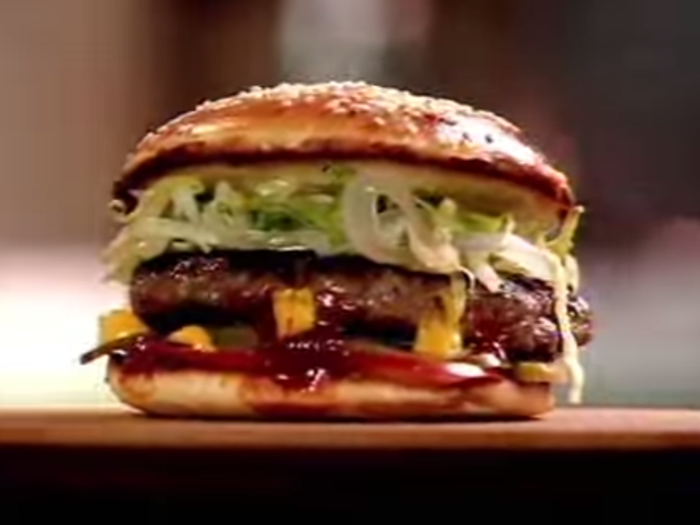
Their journey starts at Louis' Lunch in New Haven, Connecticut — said to be the birthplace of the hamburger. At Louis', the burgers are made from a blend of five cuts of meat and cooked on vertical grills.
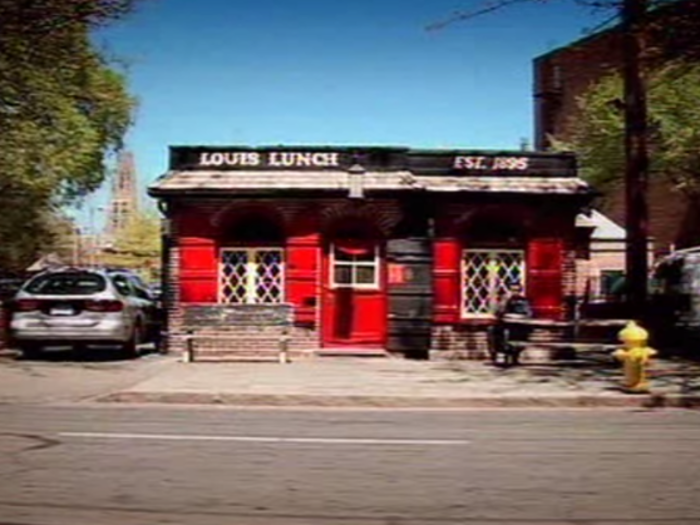
Unlike most burgers, the Louis' patty comes on toasted white bread, slathered in spreadable cheese.
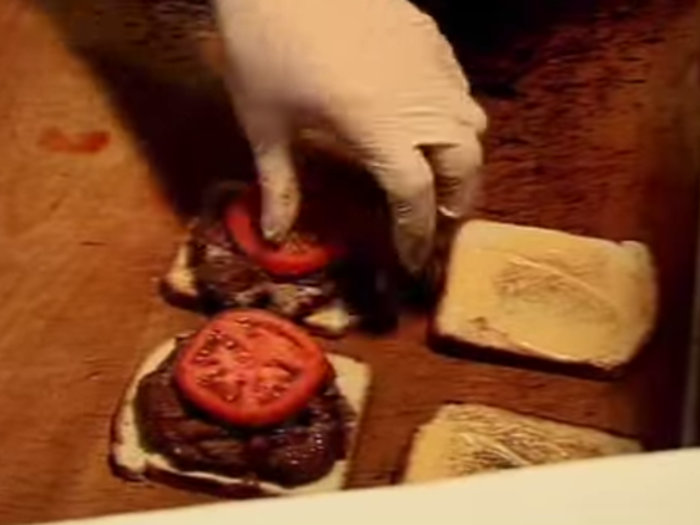
Blumenthal's takeaway? It's all about the beef. "The quality of the meat comes through massively," he says. "The meat comes apart really easily, and that makes the burger really juicy."
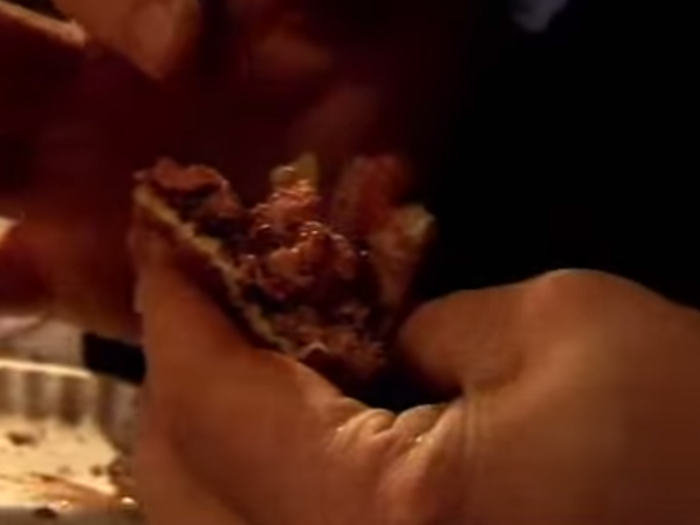
For better or worse, McDonald's is an integral part of the burger's rise in popularity, and the chef makes an obligatory stop at the Times Square location to chow down on a Big Mac.

There's no way you can turn around and say it's disgusting — it's not," Blumenthal says. "It was just that the sheer amount of energy from fat and sugar it delivered while I was eating it made me incredibly lethargic.
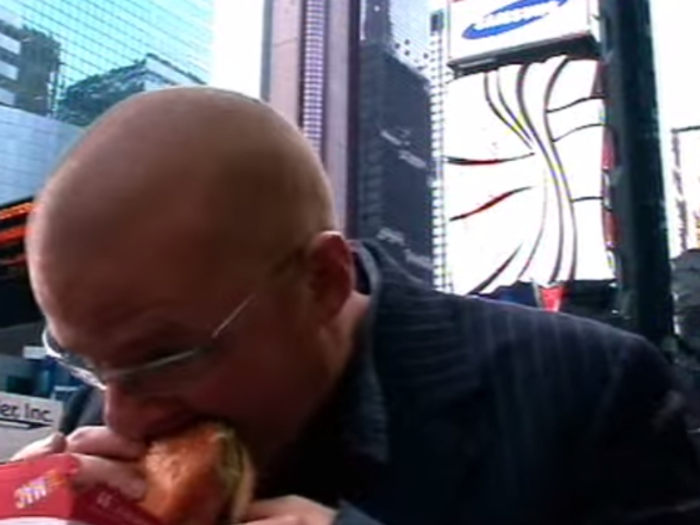
Back in London, Blumenthal visits a butcher known for his skill in seam-boning — removing the connective tissue from between the muscles of the meat. The chef wants to re-create the "open texture" of the Louis' Lunch patty, which can be achieved by removing that connective tissue and cutting the meat against the grain.
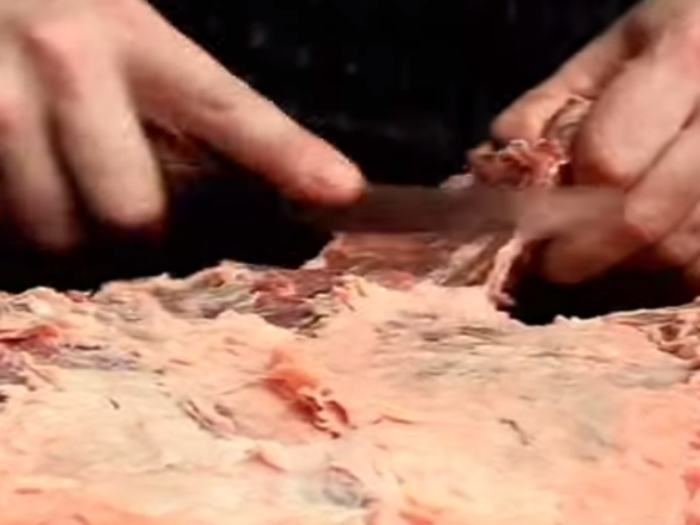
Back at the lab, Blumenthal determines the golden ratio of beef: 50% chuck that has been salted for about an hour ...
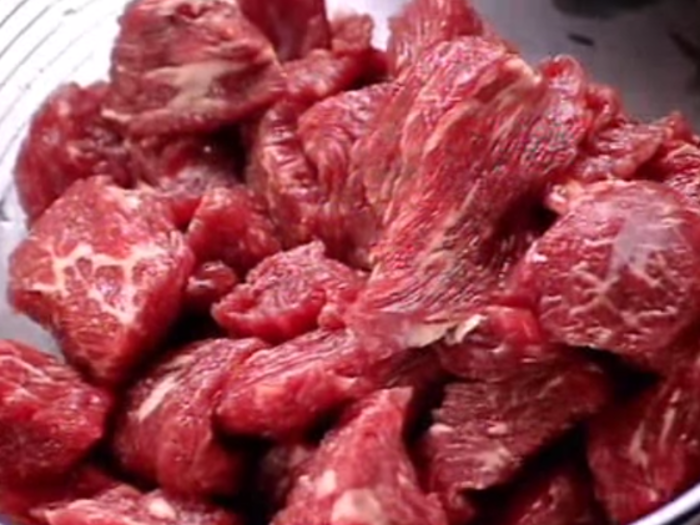
... 25% short rib ...
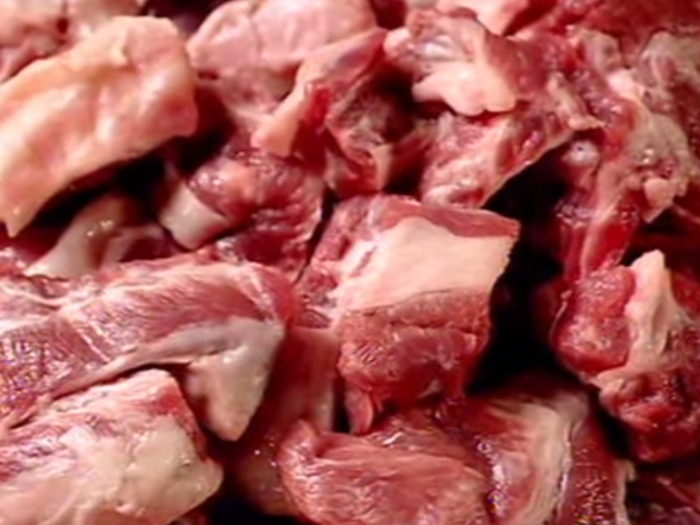
... and 25% brisket. The short rib and brisket are ground twice since they are so sinewy; because the chuck has been seam-boned, it needs just one run through the grinder.
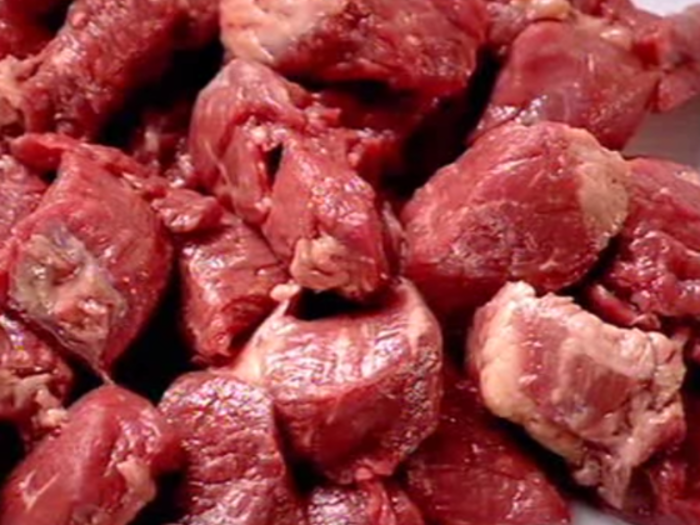
For Blumenthal, grinding is a two-man job. "The reason for needing another pair of hands," he says, is that is that as the meat exits the spout, someone needs to keep "all of the fibers and the actual lines of meat running in the same direction."
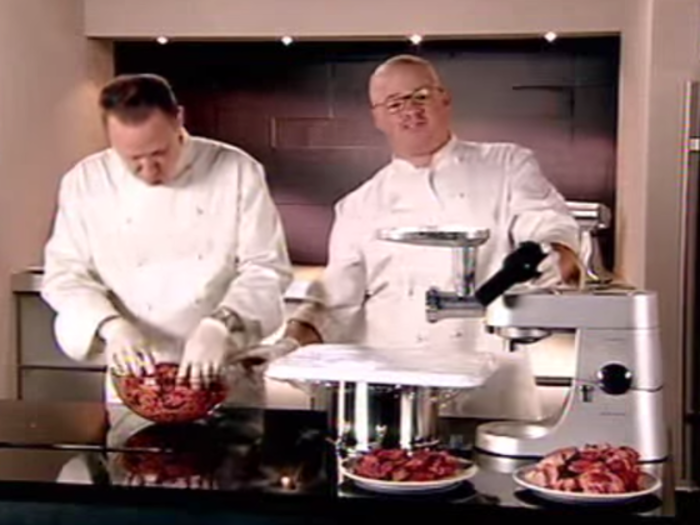
There are two benefits to keeping the grains of meat running straight: The first is to avoid the release of proteins that could act as binding agents, and the second is to keep the strings from becoming intertwined. Either could lead to a denser, less "open," and drier patty.
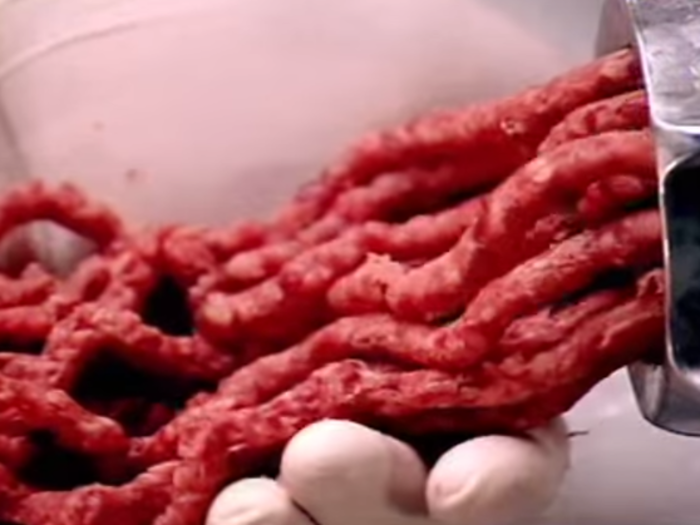
This is where Blumenthal veers WAY off the path of the traditional burger patty. Instead of forming patties with his hands, he rolls the entire pile of ground beef into a sausage-like tube, which he will refrigerate in plastic wrap and then slice like a sushi roll.
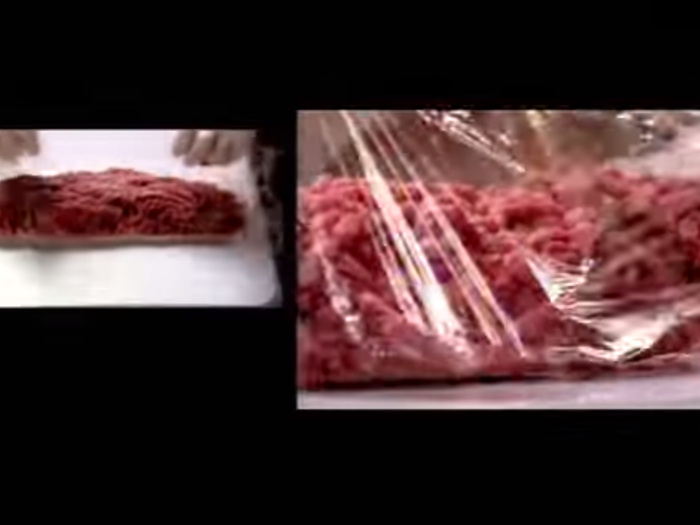
"When we cut through the meat, the outward direction of the fibers will help it fall apart, giving it the really open texture that I want," Blumenthal says.
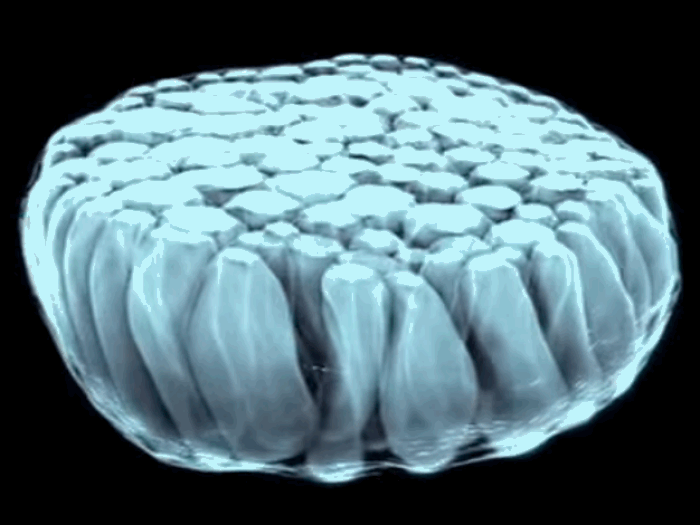
Next stop for the chef: Bouchon Bakery, where famed chef Thomas Keller dished on his sirloin and aged Wagyu slider on a brioche bun. "Thomas' brioche buns got me thinking — size does matter," Blumenthal concludes.
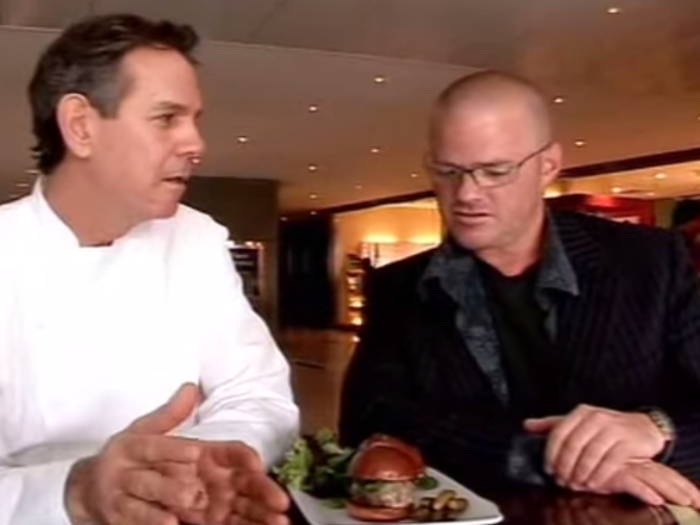
That realization brought Blumenthal to the Center for Food Sciences in Holland to determine the perfect bite size. There, Blumenthal dug into one of his own burgers — and had it measured after each bite — to discover the proper thickness.
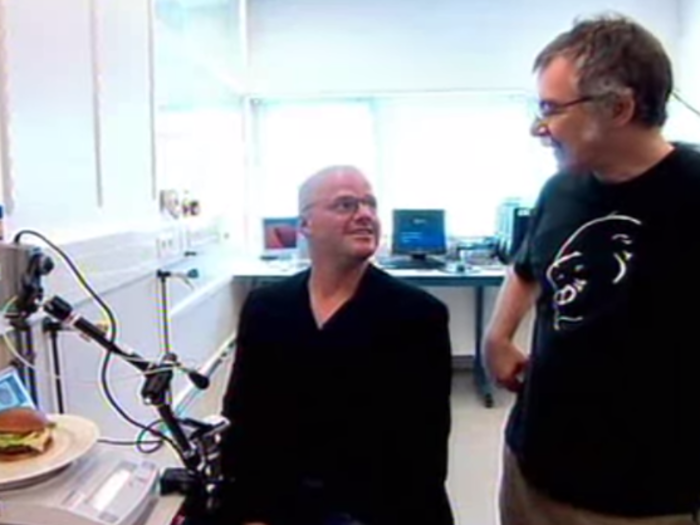
The scientists at the Center for Food Sciences theorized that the perfect bite should be no more than two fingers thick. "It's OK if the bun is a bit thicker, as long as it actually collapses," Blumenthal says.
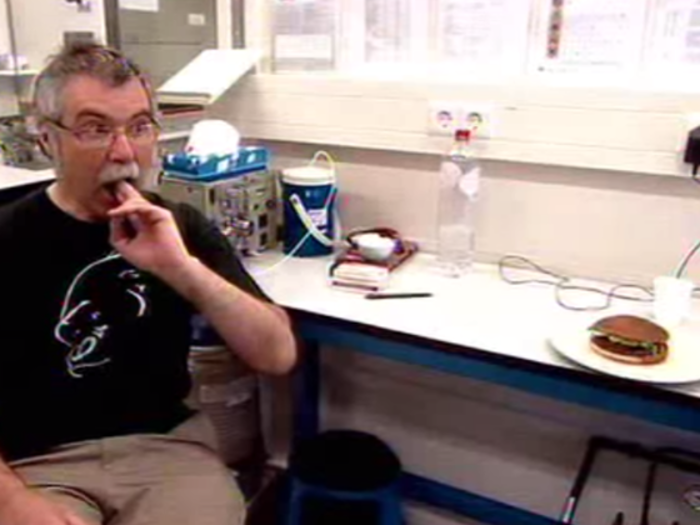
In the moment, Blumenthal takes a step back to consider the monumental task he has taken on. "We've got to deliver that big hit of flavor, that great mouth-feel, create enough saliva and a really juicy, wonderful flavor, and something to bite into — but it's actually got to fit into the mouth at the same time."
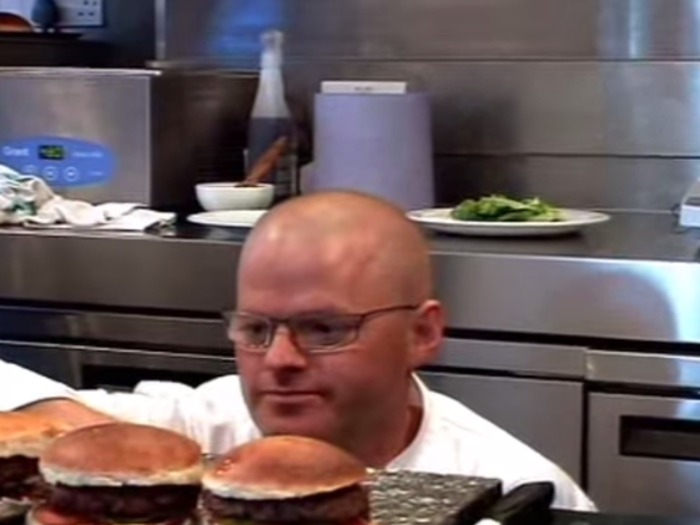
With that, it's back to the kitchen to develop the ideal bun. It turns out to be Blumenthal's biggest challenge. After three months of experimentation, the team eventually finds its perfect recipe. It involves a strong Canadian bread flour, sugar, salt, and grapeseed oil.
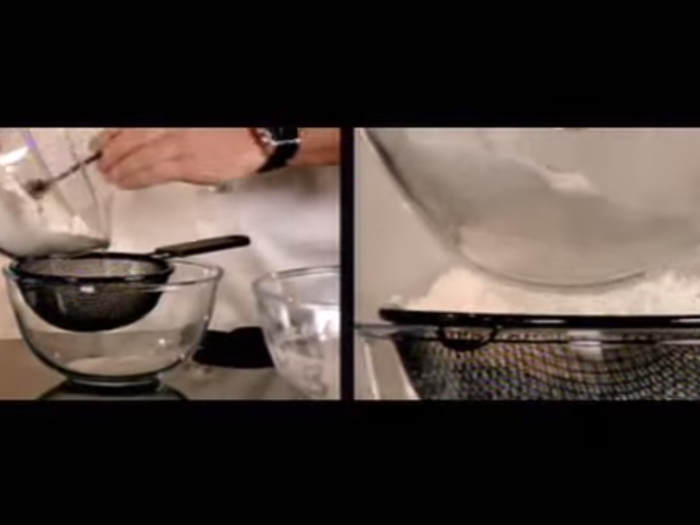
He briefly considers the merits of a rectangular bun, wondering whether it would hold the ingredients together better than a round bun. That plan is quickly abandoned. "There's no valid reason to changing the shape of the bun from round to rectangular, or any other shape, for that matter," Blumenthal says.
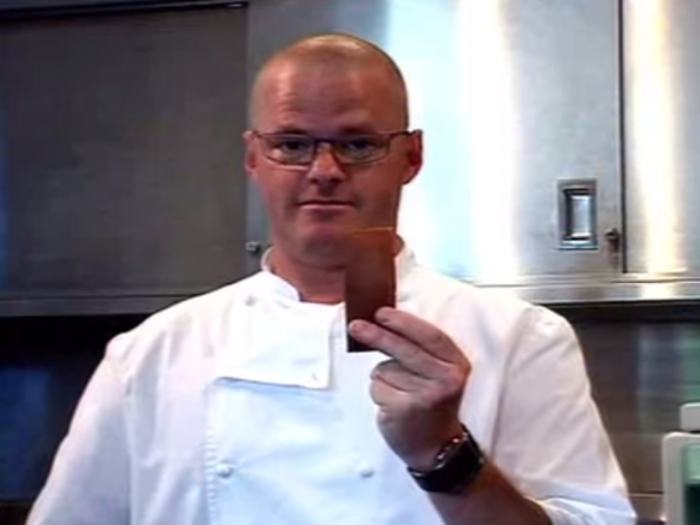
To make his buns, Blumenthal creates molds that are 15 centimeters in diameter and shapes round balls of dough to fit inside them. He flattens them to fill the molds and ensure they don't come out too thick.
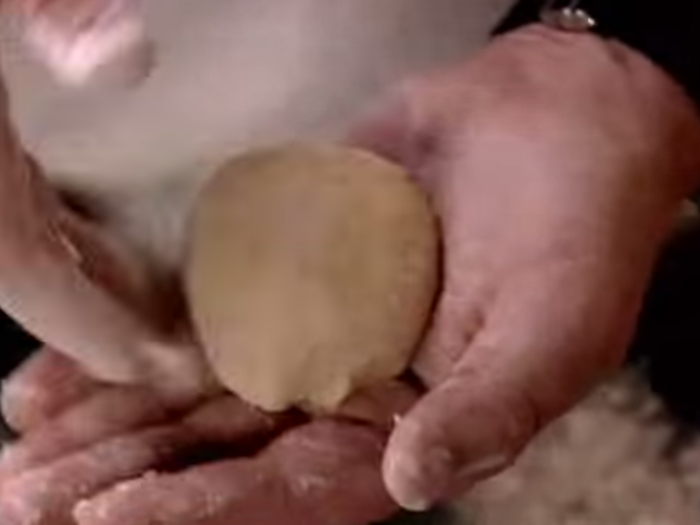
Before popping them in to bake, Blumenthal performs a nifty trick: He tosses a cup of water in the oven to remove the dry heat and create steam.
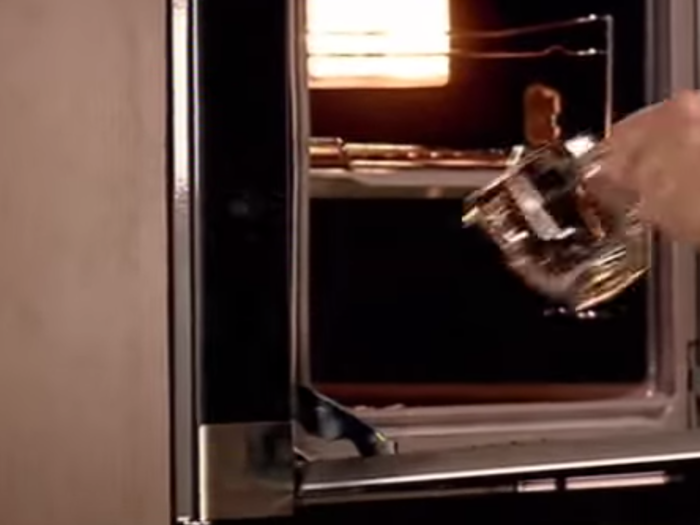
After several minutes he removes the buns to glaze them with an egg mixture to improve their appearance and sprinkle them with sesame seeds. Then it's back into the oven.
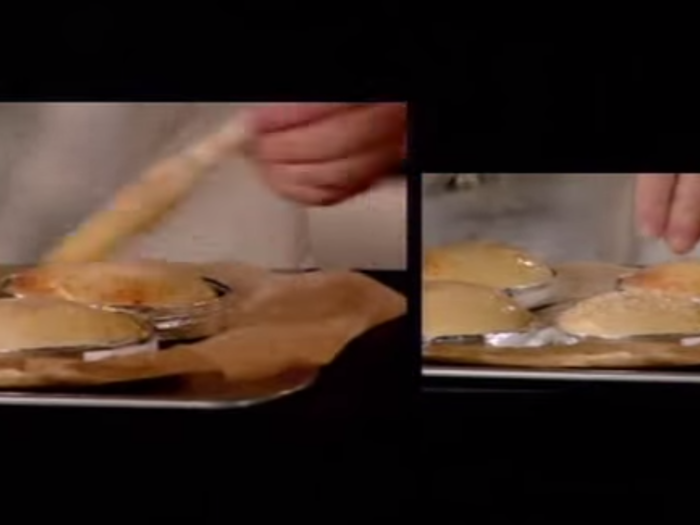
The next step is cheese. Blumenthal elects to make his own, using grated comté cheese, a garlic- and thyme-peppercorn-infused sherry, and sodium citrate, which helps emulsify the proteins and fats and give the cheese a creamy texture.
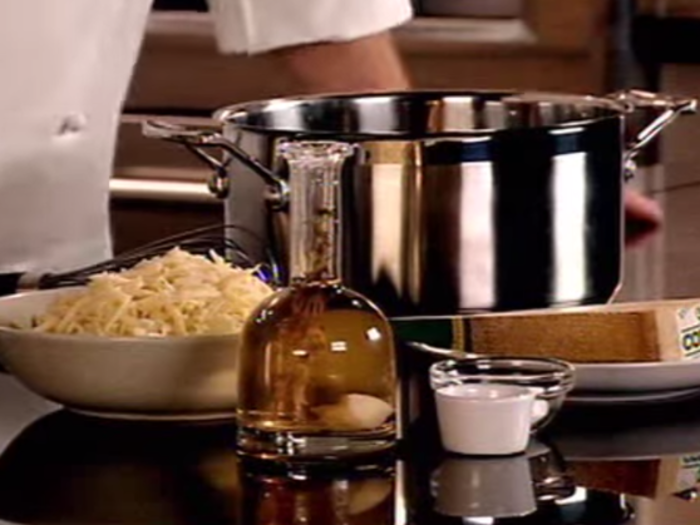
The cheese is poured onto a tray lined with parchment to cool, and then cut into slices.
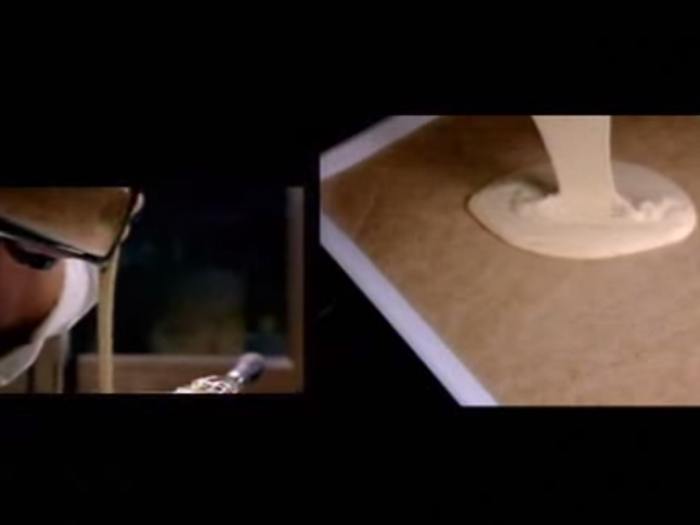
Blumenthal goes back to square one when it comes to condiments, too. He's a fan of ketchup, but Heinz won't do for his perfect burger.
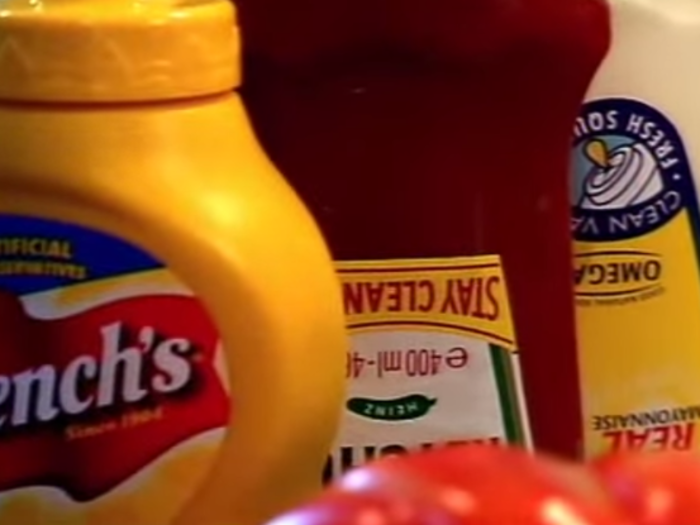
Instead he concocts a "meat boosting" tomato concentrate made with the seeds and pulp of a tomato, which most chefs throw away.
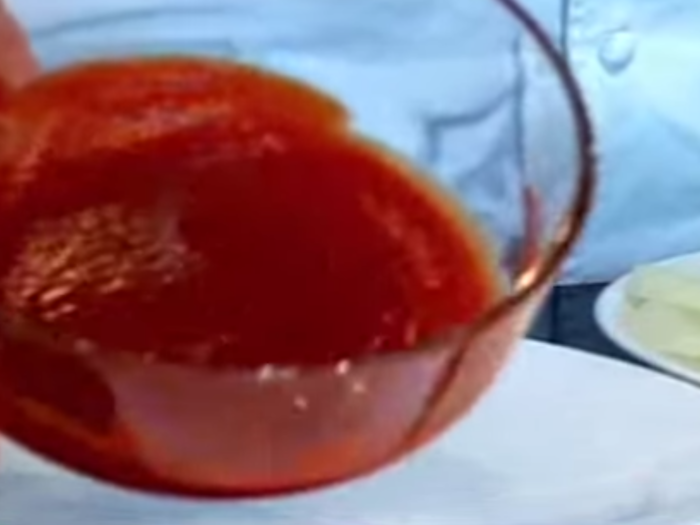
To consider the construction of the perfect burger, Blumenthal takes a trip to Burger Joint, a burger "speakeasy" hidden in the lobby of Le Parker Meridien in Manhattan. The spot is known for its cheeseburger with "the works."

One of the challenges is going to be — I want my bits in, I want my lettuce in some shape or form ... I want tomatoes, I want pickles — but I also want it to stay in while I'm eating it," Blumenthal says. "So I'm going to have to put my thinking cap on, and just think about how to structure the burger like building a house.
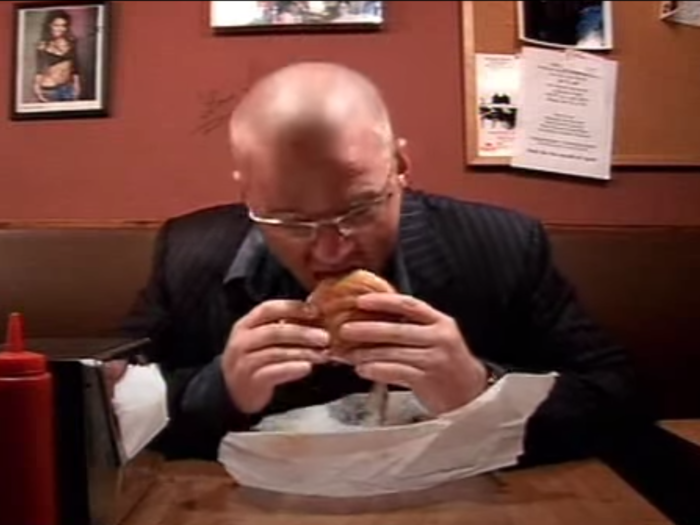
Finally, it's go time for Blumenthal and the crew.
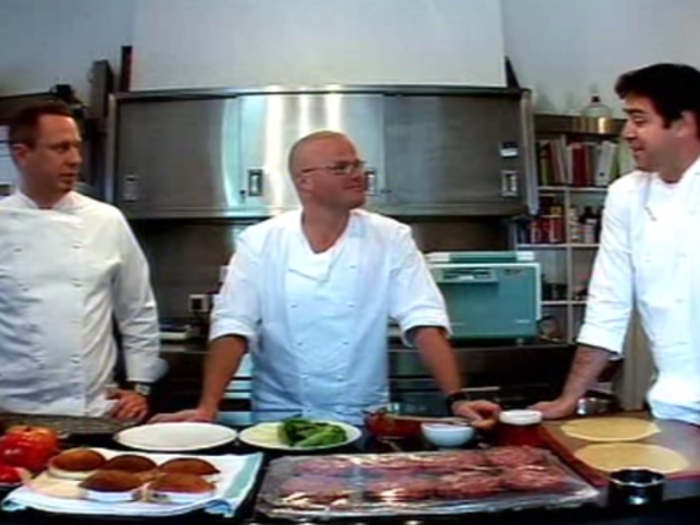
The chef slices his meat roll into perfectly round patties.
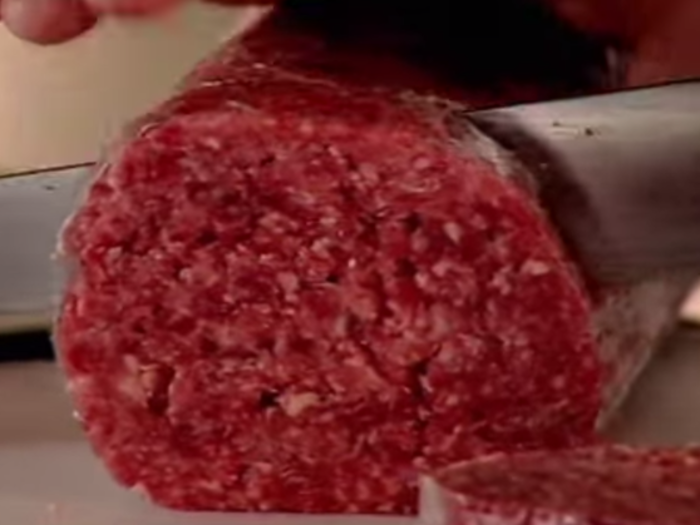
He heats his pan for 20 minutes, letting it get at hot as possible before placing the burger carefully down.
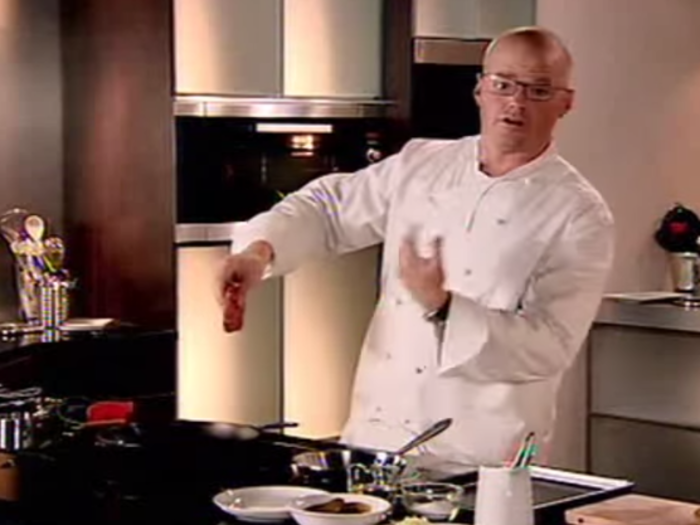
Blumenthal also innovates on his cooking method, flipping the burger every 20 or 30 seconds and treating the pan "almost like a rotisserie." This method "drives a much more even temperature through the meat," resulting in a burger that's "nicely colored on outside, but evenly cooked through the middle."

He toasts the bun for 20 or 30 seconds in the pan where the burger was cooked to give it a meaty flavor.
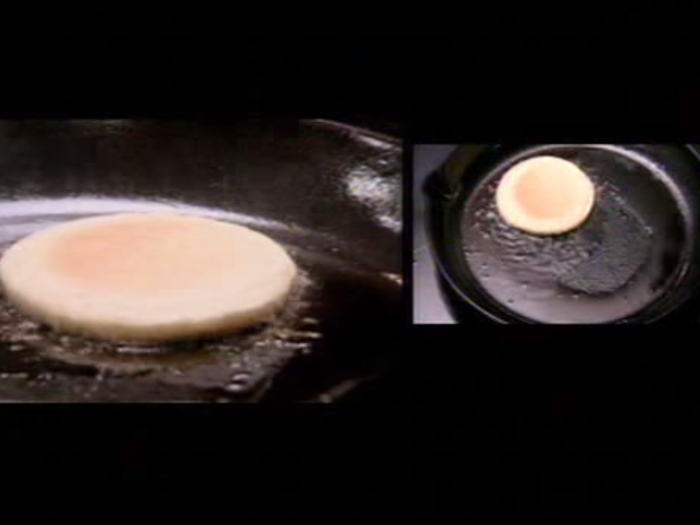
Each half of the bun is topped with a slice of cheese and placed under a broiler to melt (but not brown) it.
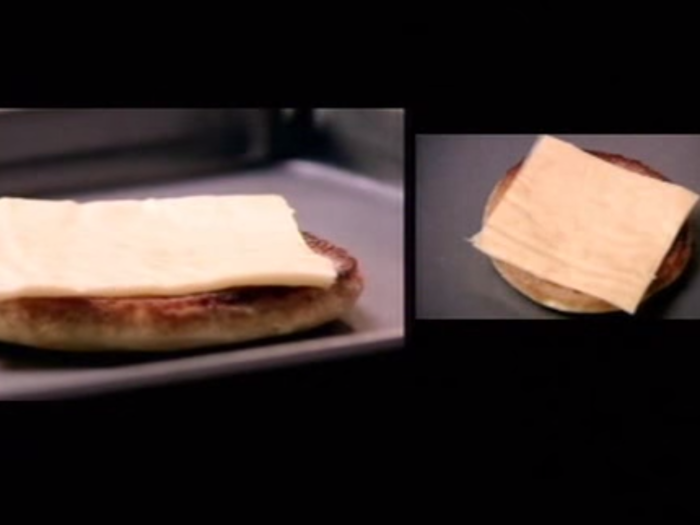
The rest of the toppings are arranged: sliced gherkin pickles, tomatoes, shredded lettuce, and onions that have been briefly blanched "to remove that aggressive rawness from them."
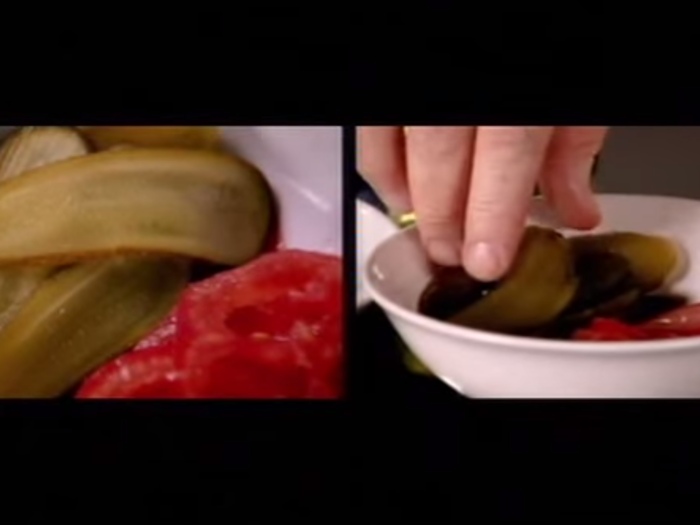
At last, it's assembly time. In yet another contrarian move, Blumenthal puts most of his condiments and toppings beneath the meat patty.
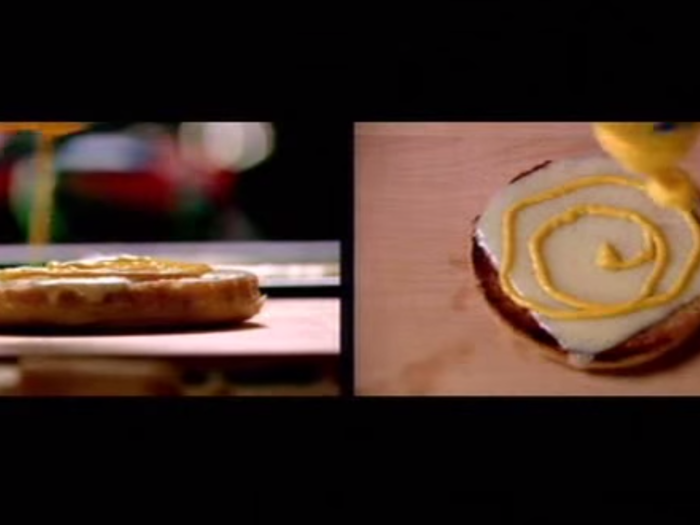
Here's the assembly order, from bottom to top: Toasted bottom bun, slice of cheese, mustard, mayo, tomato concentrate, sliced gherkins, sliced tomato, patty, mixture of shredded onion and lettuce, slice of cheese, toasted top bun.
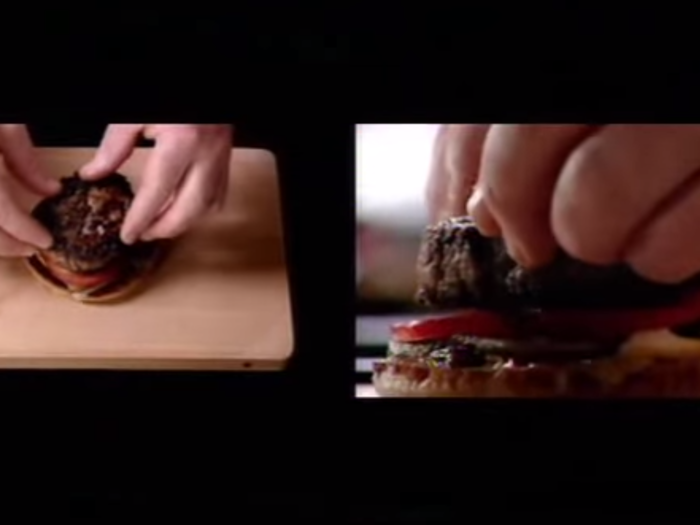
And there you have it. In the eyes of one of the word's great chefs, this is the perfect hamburger.
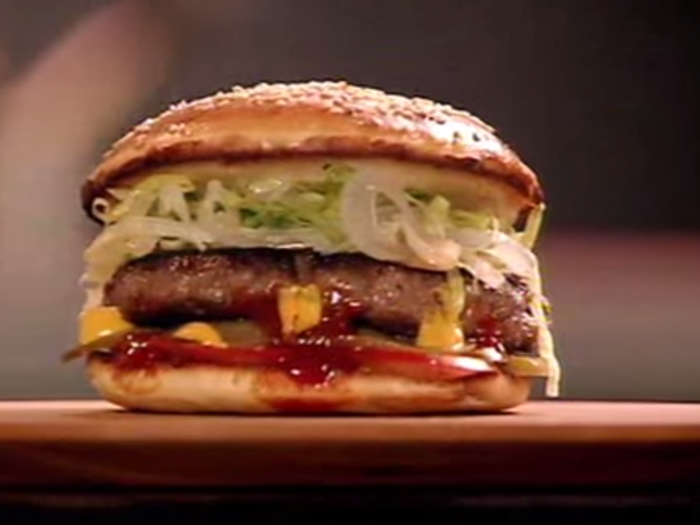
Popular Right Now
Advertisement